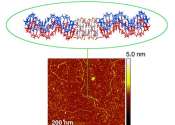Fuji Xerox shows e-paper colors without filter
(Phys.org) -- Fuji Xerox has come up with an electrophoretic type electronic paper (e-paper) prototype that can realize a color display without using a color filter. The company showcased the e-paper model at SID Display ...







